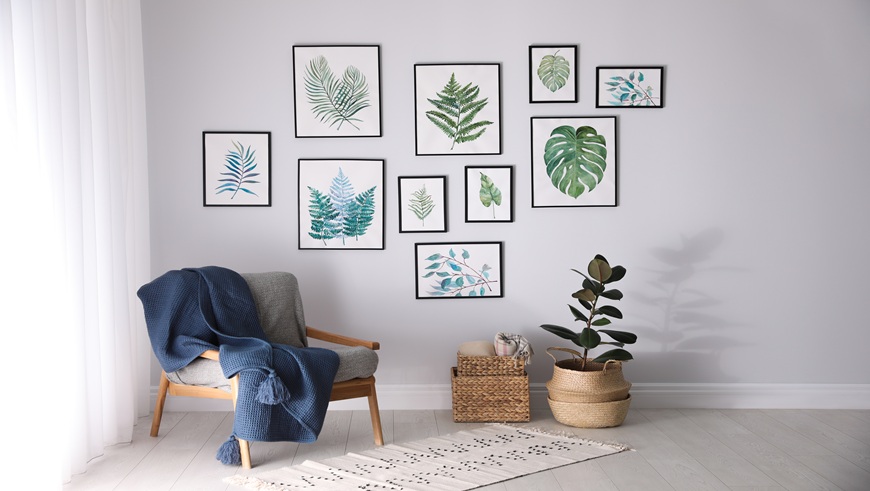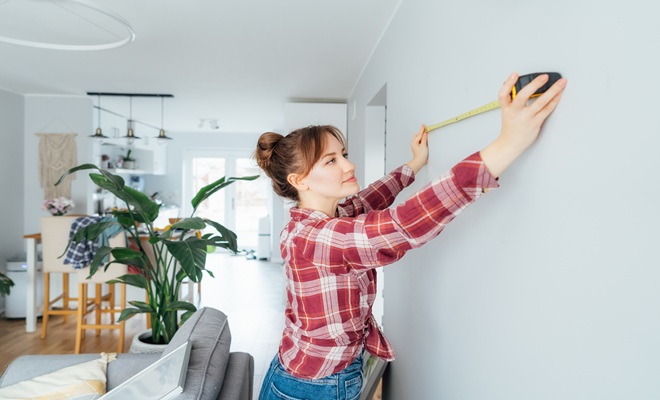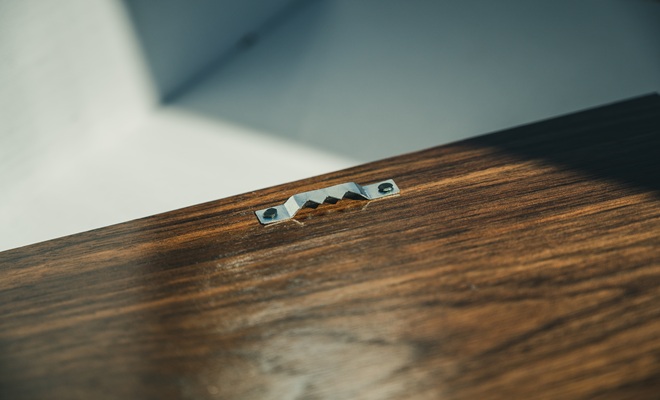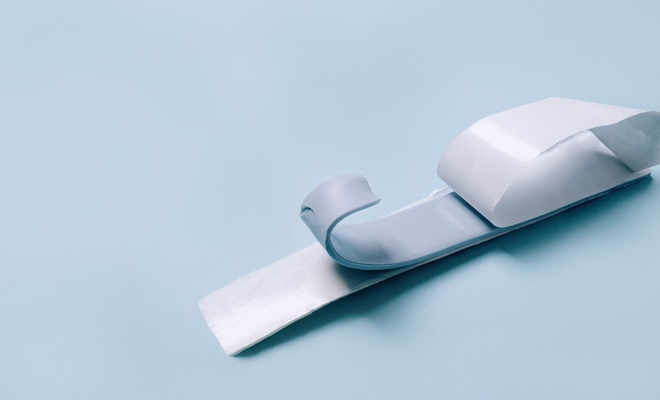How to Hang Artwork Without Damaging Your Walls
Last updated 30th April, 2025
Hanging artwork on your walls is one of the best ways to personalise your home. However, doing this can leave unsightly holes and marks. So, you might be wondering whether there’s a way to hang artwork without damaging your walls.
Whether you’re renting your home or just want to protect your décor, interior design expert Zoe Warren at PriceYourJob.co.uk explains how to avoid causing unnecessary damage when you hang art and outlines the different ways you can put up pictures without drilling holes.

How to Minimise Marks on Your Walls
To minimise marks and other damage to your walls, follow these steps when hanging your art:
Plan First
You can avoid making more holes than necessary by planning out where your artwork should go. It’s best to hang a single frame or art piece at eye level but also consider the light. Light can affect how your artworks look but crucially, too much strong daylight can damage them unless you have UV-resistant frames.
If you’re attempting a gallery wall, plan it out on the floor first. So, you can work out the best arrangement before making any pencil marks or holes.
Find the Best Place to Put Your Fixings
Don’t make any pencil marks or exploratory holes until you’ve checked there are no hidden wires or pipes in the wall. If you’re hanging artwork on a partition wall, you’ll get a more secure fixing by using one of the timber studs rather than the plasterboard. To do this, use a wall scanning device that can detect wood as well as metal and live wires.

Use the Right Fixings for Your Wall
Using the wrong type of fixings can not only damage your walls but it can lead to frames dropping on the floor and smashing. So, make sure you’ve got the appropriate fixings for the type of wall and for the weight of your artwork.
To hang heavy items on solid walls it’s best to use a wall plug and screw but for lighter items standard picture hooks should be fine. If you’re hanging heavy items on plasterboard walls, you have several options. You can use a special screw, called a bear claw hanger, that grips the plasterboard. This can hold up to around 13kg in weight but for art that’s on the heavier side, you may be wise to use anchor or toggle fixings for extra support.
Avoid Pencil Marks
Instead of marking your fixing holes with a pencil, use decorator's tape. Apply this to the wall and make your pencil mark on top. Not only does this avoid marking the wall itself, but it reduces splintering around the hole when you’re drilling or screwing. So, you’ll end up with neater, less visible holes in your walls.
For heavier artwork, it’s likely you’ll need to use two fixings. Before drilling or screwing in multiple fixings, use a spirit or laser level to make sure your tape marks are lined up.
Protect Walls
When pictures and frames move around on your walls they can scratch and scuff wallpaper and paint. But there are a couple of tricks you can use to stop this happening. The first is to attach sawtooth hangers or D-rings to the back of frames. This enables you to hang pictures straight from a screw fixing or hook, reducing movement. However, if you prefer to use wire or string to hang pictures, add some self-adhesive felt to the back of your frames to cushion the walls.

Creating a Gallery Wall Without Damaging Your Walls
Here are some ideas for hanging multiple artworks without damaging your walls:
Hang it From a Picture Rail
Picture rails aren’t just for show. So, if you’re lucky enough to have them in your home, use them. All you need are some picture rail hooks and hanging wire and you’ll be able to display all of your artwork without needing to make a single hole in the wall.
Use a Picture-Hanging System
If you’re not fortunate enough to have picture rails, you could take inspiration from art galleries and install a picture-hanging system. These systems work in a similar way to traditional picture rails. The difference is the rail can be fitted at the very top of your wall where it won’t be noticeable. Pictures are suspended on clear wires and can be slid along the rail, giving you an easy way to switch up your display without leaving unsightly holes in the wall.

Utilise a Curtain Pole
You can make your own cost-effective picture-hanging system with a curtain pole. So long as you’re not hanging anything too heavy, you should only need bracket fixings at either end of the pole, minimising the number of holes you need to make. With this method, you can use hooked curtain rings or small ‘S’ hooks to hang your art.
Wall-Mount a Metal Grid, Corkboard or Pegboard
Another way to avoid making too many holes in your wall is to mount a large metal grid, corkboard or pegboard on your wall first and attach your art to this. This is another great option if you like to rotate your display on a regular basis.
Grab Some Claw Hangers
Claw picture hanging hooks are small steel fixings that grip onto plasterboard. These enable you to hang frames and other artworks up to 30kg in weight, without the need for anchor fixings. They’re easy to remove and only leave pinprick marks on your wall, so they can be a renter-friendly way to display art on partition walls.
How to Hang Pictures Without Making Holes in the Wall
If you’re keen to avoid even the tiniest of holes in your walls and don’t have a picture rail, there are a few other options you could try:
Stick it on With Self-Adhesive Strips
Removable self-adhesive strips are one of the best ways to hang artwork without damaging your walls. Self-adhesive tape is best for small and light pieces while self-adhesive hooks or Velcro strips are best for heavier frames and artworks. Whatever you use, make sure the hanging method is suitable for the weight of the art and use multiple hooks or adhesive strips where necessary to ensure there’s adequate support.
Mount it With Putty
Mounting putty has been around for years and works in the same way as Blu Tack but is designed to leave no trace on walls. As mounting putty can only support weights up to around 60g, it’s best used to hang unframed artworks and lightweight canvases.

Use Your Shelves
You don’t need to stick to hanging artwork from your walls. If you’re keen to avoid any risk of damage to them or you rent your home, you could try hanging pictures from a bookcase or shelving unit instead. However, it’s best to avoid weighty pieces as this could destabilise your furniture. Choose picture frames made from aluminium or that have plastic ‘glass’ to help minimise the weight.
Final Thoughts
Hanging artwork in your home can be done without damaging your walls, so there’s no reason why you can’t brighten up and personalise your home with your favourite prints, paintings, plates and tapestries. However, you do need to plan ahead to avoid making mistakes and when it comes to heavier artwork, you need to make sure you’re using the right fixings. If you’re in any doubt about how to safely and effectively hang your art, it’s best to get someone in to do it for you.









